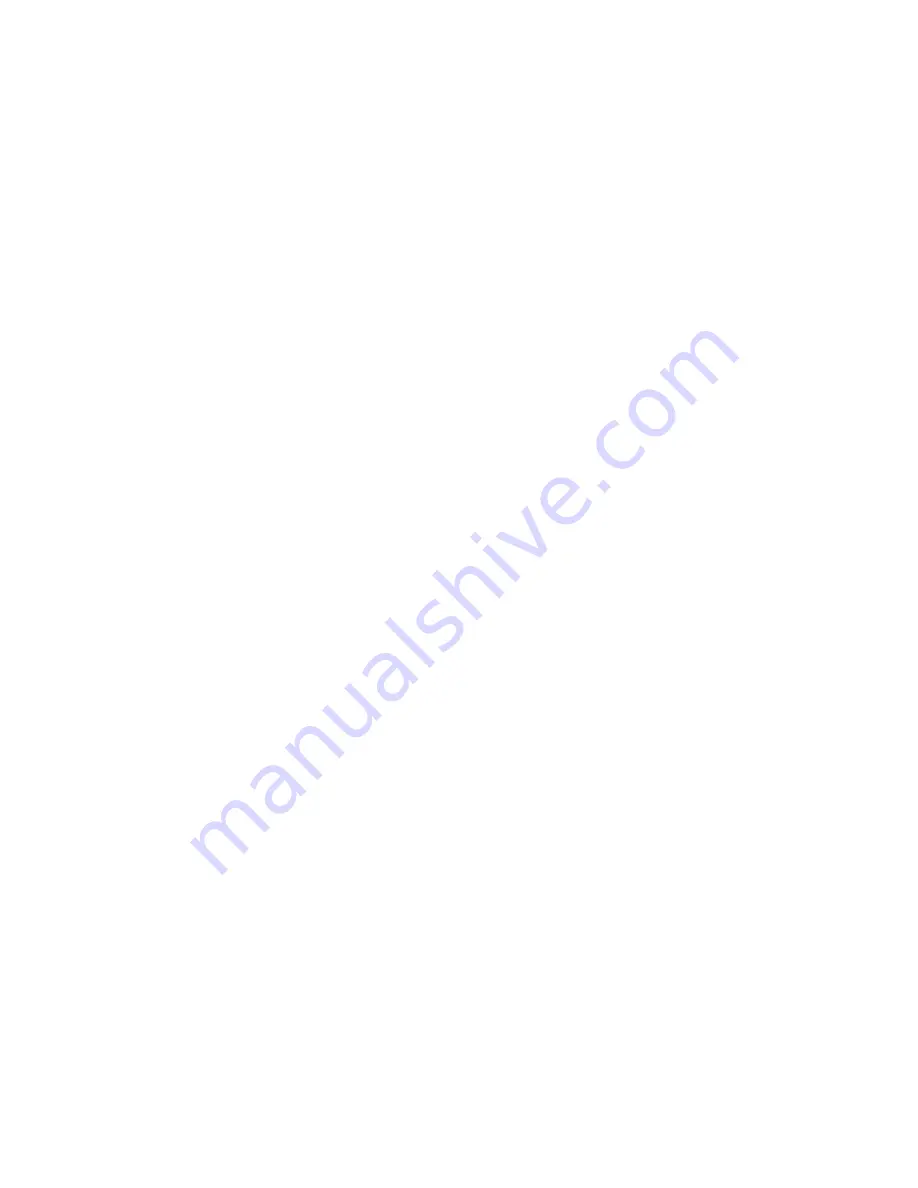
Section
140 • 180
Page 508
Dated
October 2011
care to prevent damage. Should
prying be necessary, it should be
done evenly and with great care.
13. On three & four stage pumps, the
drive collar (#14) must be removed
before further disassembly can
continue. A small screwdriver
or pocket knife can be useful for
this task. Damage to the groove
should be avoided.
14. Slide the impeller (#11) off the
shaft. Penetrating oil should be
used if resistance occurs. Prying
impellers off the shaft almost
always ruins the impeller.
15. Remove the next channel ring
(#10) using the same care as with
the first.
16. Remove the key (#23) from the
shaft. Diagonal side cutters or end
nippers are helpful for this job.
17. For disassembly of single stage
pumps (141/181 models) proceed
to step #20. For all other models
(142/182, 143/183, & 144/184)
proceed to next step.
18. Slide off the next channel ring
(#9). Along with the ring will come
an interstage bushing (#16). Note
the direction the bushing is facing
so that the same surfaces will be
in contact after reassembly.
19. Remove the remaining channel
rings, impellers and interstage
bushings. Stacking the parts
as they are removed will help in
maintaining the proper orientation
and in keeping the impellers with
the same pair of channel rings.
On badly corroded pumps it may
be easier to drive the guide rods
(#18) back through each ring
rather than sliding the ring the
entire length of the rods. If this is
to be done, care should be taken
not to “mushroom” the rod ends
by tapping with too much force. A
soft face hammer and/or brass rod
is recommended. Penetrating oil
helps greatly.
20. Turn the pump around and
remove the two nuts (#20) holding
the bearing arm (#3) in place.
21. Removing the bearing arm will
require the use of a gear puller
since the bearing (#24) is held in
the bearing arm by means of a
snap ring (#4). Removal of the
bearing arm will bring the bearing
along with it.(see figure 4-1)
22. Slide the rubber flinger (#21) off
the shaft.
23. The remaining internal parts; the
shaft (#17) and the seal rotating
assembly (#12) will slide easily out
of the cover (#1).
24. The shaft extension end seal
rotating assembly (#12) can be
removed in the same manner as
was the outboard rotating element.
25. To complete the disassembly,
remove the two “O” rings (#8) and
two guide rods (#18).
26. Press out the shaft extension
end stationary seat (#12.5) using
the same procedure as on the
outboard seat.
27. The remaining seal cup (#2) can
be removed from the cover by
driving it outward from the inside.
4D INSPECTION OF
COMPONENTS
Thoroughly clean all parts. All
components should be examined
for wear and corrosion. Replace
parts that show visible wear. If the
pump was no longer producing
sufficient pressure or capacity, it is
a safe assumption that clearances
between rings and impeller exceed
an acceptable amount. At least
the impellers should be replaced in
this case. If the total side running
clearance for an impeller exceeds
.007”, it is unlikely that pump
performance will reach that of a new
pump, except at lower discharge
pressures.
“O” rings and other elastomeric
components should be replaced if
they have been deformed or cut.
If seal components must be reused,
carefully inspect for microscopic
cracks and nicks. Scratches that
might be ignored elsewhere can
produce leakage if they are on
seal carbons and seat wearing
surfaces. Cleanliness is imperative
when working with mechanical
seals. Almost unnoticeable particles
between seal faces can be, and often
are, the cause of early seal failures.
Check to be certain that a press fit
still exists between the shaft and the
bearings. New bearings, or at least
cleaned and regreased bearings, are
recommended.
All impellers and interstage bushings
are designed to float, therefore they
should move easily on the shaft. No
more than .0l0” diametral clearance
should exist between the shaft and
the inside of an interstage bushing.
More than this can produce hydraulic
unbalance that can quickly wear out
the impellers. As long as impellers
can be moved on the shaft by hand,
they are loose enough. If they can
be rocked or wobbled, they are
definitely too loose and must be
replaced.
Check the shaft for galling, pitting,
and corrosion. If there are worn
areas between stages of multistage
pumps, the shaft should be replaced.
Pitting or corrosion in the area where
the seal comes in contact is also
cause for shaft replacement. This
will cause leakage under the seal.
Surface corrosion must be removed
so that seals can slide freely during
assembly. The shaft diameter
should be no smaller than .002 inch
below the nominal fractional seal
sizes. Remove any nicks or burrs
which may have occurred during
disassembly. Reclean parts as
necessary.
4E REASSEMBLY
1. Begin reassembly with the inlet
cover (#1). Thread two nuts (#20)
onto the guide rods (#18), and
slide them through the two holes
at six and twelve o’clock. Push
them in until the underside of the
nuts contacts the cover.
2. Slide two “O” rings (#8) over the
extended ends of the guide rods
until they touch the cover.
3. It is recommended that the
assembly be placed on blocks in a
vertical position as shown.(refer to
figure 4-3)
4. Place an “O” ring (#7) into the
groove in the face of the cover


































